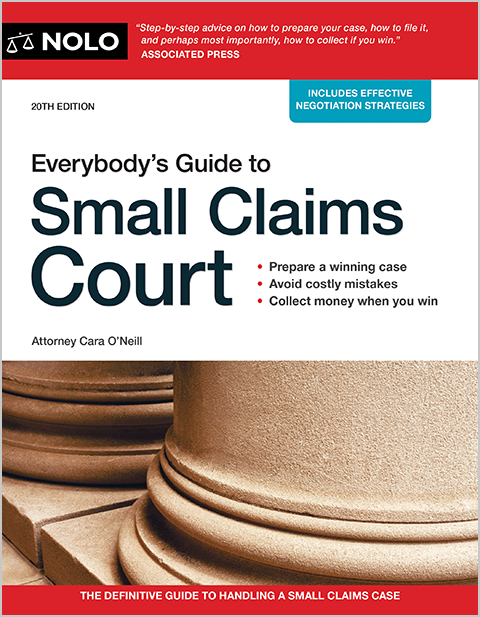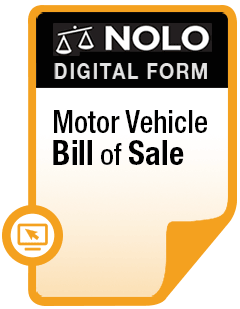Especially when a violation of the law is involved, a driver who hits a pedestrian might face criminal charges in addition to civil liability.
Any traffic accident between a vehicle and a pedestrian can have serious consequences. Pedestrians often suffer serious injuries in these situations, and drivers who strike pedestrians can face criminal charges and civil lawsuits. In this article, we'll focus on the potential consequences for the driver after a car-versus-pedestrian traffic accident. (For information from the injured pedestrian's point of view, learn more about your legal options when you're hit by a car.)
What Are the Criminal Charges for Hitting a Pedestrian?
Most car accidents don't result in criminal charges. But drivers who act recklessly and disregard the safety of others can be charged with a crime. Let's take a look at a few potential charges that might arise from pedestrian-car accidents.
Traffic Infractions and Pedestrian Accidents
Drivers who commit traffic violations can be cited by a police officer at the accident scene. Examples of traffic violations include:
- speeding
- running a stop sign or red light
- texting while driving
- failing to yield, and
- making unsafe lane changes.
In most states, traffic violations are infractions that can't result in jail time. Drivers who are convicted of traffic infractions face fines, traffic school, and points on their driving record. Traffic infractions can also raise your insurance rates and might be admissible evidence in a personal injury lawsuit in some states. If you are cited with a traffic infraction in connection with a pedestrian accident, talk to a lawyer before your first court date for the ticket.
Hit and Run Accidents Involving Pedestrians
Every state requires drivers to stop at the scene of a car accident, provide identification, and give any needed assistance (like calling 911). Drivers who don't stop after pedestrian accidents, not only endanger the individual they hit, but also risk being criminally prosecuted for hit and run driving. Penalties for drivers who flee vary depending on the severity of the crash. In nearly all states, drivers who leave the scene of an accident that results in serious injury or death can be charged with a felony and sentenced to prison.
Driving Under the Influence (DUI) and Car-Pedestrian Accidents
A DUI is typically a misdemeanor crime. But a DUI offender who kills or seriously injures another person, including vulnerable pedestrians, can be charged with a felony DUI and sentenced to a lengthy jail or prison term. Other consequences might include having to pay thousands of dollars in fines and victim restitution.
What Are the Criminal Penalties for Hitting a Pedestrian?
Criminal courts are designed to determine whether a person has committed a crime and, if so, punish the offender. In criminal court, the government (represented by the prosecutor) must prove the charges against the defendant beyond a reasonable doubt. If a conviction is obtained, depending on the circumstances of the crash, criminal penalties might include:
- incarceration (prison or jail)
- probation
- restitution (victim compensation)
- driver's license suspension, and
- fines.
Can a Fatal Pedestrian Accident Be Manslaughter?
According to the NHTSA, 7,388 pedestrians died in traffic crashes in 2021.
In most states, drivers who negligently, recklessly, or unlawfully operate a vehicle and cause the death of another person can be charged with vehicular manslaughter. Other states don't have specific vehicular homicide laws, but rely on general homicide laws, like involuntary manslaughter, to prosecute drivers who cause the death of another person.
Vehicular manslaughter and other driving-related homicides are typically defined as causing the death of another person while:
- driving in a negligent, grossly negligent, or reckless manner
- in violation of the DUI laws, or
- committing certain traffic offenses.
Penalties for driving-related homicide convictions vary from state to state. In some states, they're always felonies. In other states, the crime can be a misdemeanor or felony depending on the circumstances.
Getting Sued After Hitting a Pedestrian
Injured pedestrians can file civil lawsuits against the driver who hit them (and maybe the municipality where they were injured) for money damages regardless of whether the driver is criminally charged. Typical damages include compensation for:
- medical bills
- lost wages, and
- pain and suffering.
Civil courts handle disputes between individuals, including car accident lawsuits. In civil court, one party (the plaintiff) brings a lawsuit against another party (the defendant) and asks the court to award monetary damages or some other relief.
An injured pedestrian can sue a driver in civil court whether or not the driver is criminally prosecuted for the accident.
Insurance Claims After a Car-Pedestrian Accident
Injured pedestrians might be covered under their own health and disability insurance policies, or worker's compensation coverage if the accident occurred on the job. They might also file an insurance claim with the driver's insurance company. Some of the key factors that will influence a car-pedestrian accident claim, include:
- the presence or absence of clear fault for the accident—drivers are often, but not always, at fault for accidents with pedestrians
- the severity of any injuries and the nature and extent of past and future medical treatment
- the amount of time missed at work and the future impact of any injuries (lost wages and loss of earning capacity), and
- the impact of the injuries on the claimant's daily life and routine (pain and suffering).
Most insurance claims lead to an injury claim settlement, usually after back-and-forth negotiations. If settlement negotiations fail, an injured pedestrian might have to file a personal injury lawsuit.
Can I Face a Personal Injury Lawsuit If I Hit a Pedestrian?
In a personal injury lawsuit, an injured pedestrian (plaintiff) will try to prove that the driver (defendant) was careless—or "negligent." The plaintiff will often rely on the statements of witnesses gathered in the police report (see above). That report might contain the police officer's findings on any traffic violation committed by the driver—for example, that the driver failed to yield to the pedestrian at a clearly-marked crosswalk. Law enforcement observations like those carry a great deal of weight when the time comes to sort out who was at fault for the accident.
The injured pedestrian will ask the at-fault driver for compensation for all injuries and damages associated with the accident—including payment for medical treatment, time missed at work, pain and suffering caused by the crash, and any other relevant losses.
Wrongful Death Lawsuits and Pedestrian Accidents
Every state in the U.S. has some version of wrongful death laws. Wrongful death lawsuits can be brought by a deceased person's survivors against those responsible for causing the death. This kind of claim will first seek to establish the driver's negligence in causing the accident, and then ask for compensation for the pedestrian's survivors—including loss of the deceased's support, lost companionship, funeral expenses, and similar types of harm.
Talk to a Lawyer If You Hit a Pedestrian
Accidents involving cars and pedestrians can be serious, and the potential consequences drivers face—criminal and civil—can be significant. First things first: Learn what you should do after a car accident with a pedestrian.
At some point it might make sense to talk to a lawyer:
- Find out more about how a car accident lawyer can help you and get tips on how to find the right one for your case.
- If you've been charged with a crime (or think you might be), it might be time to talk to an experienced criminal defense lawyer.



